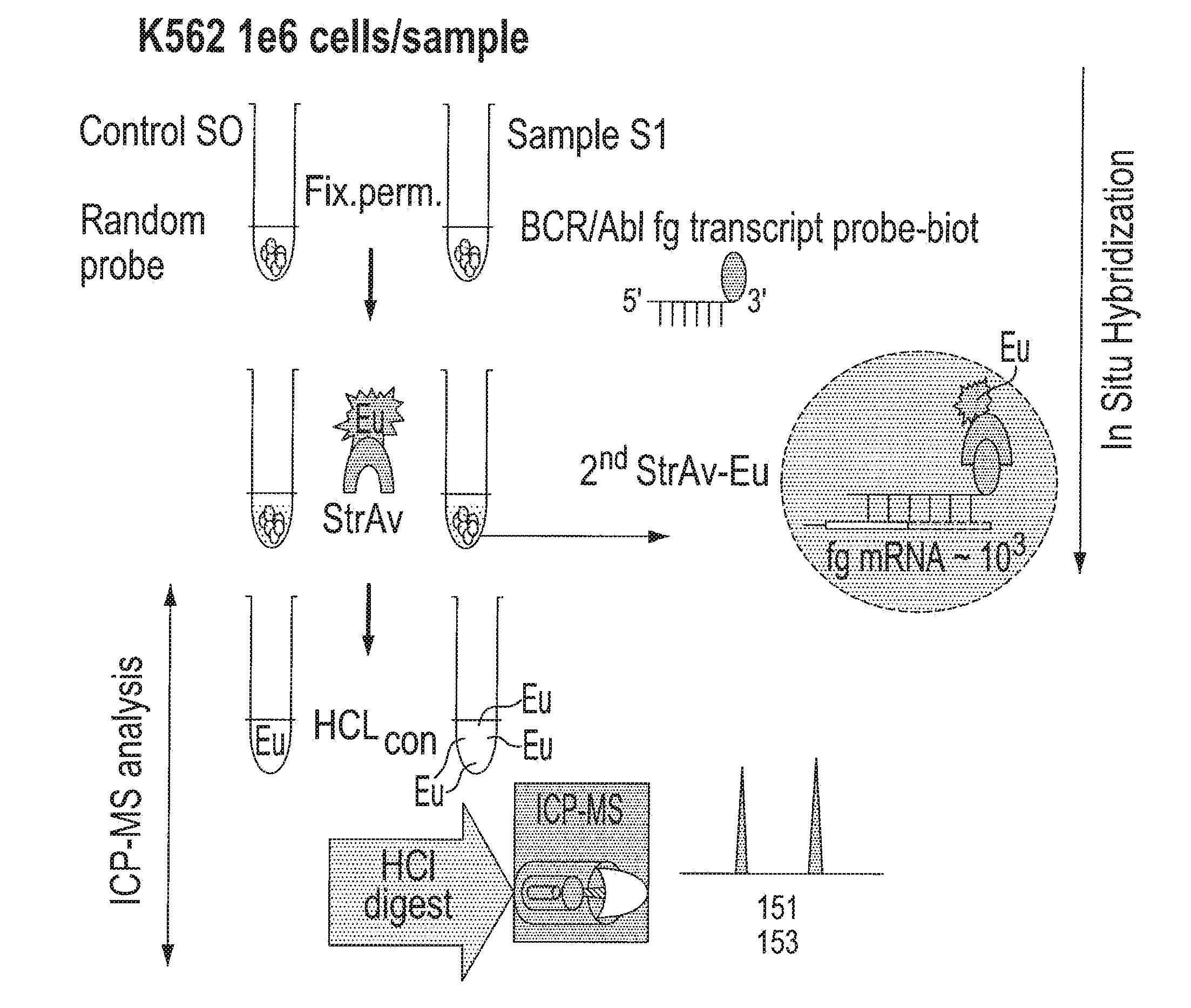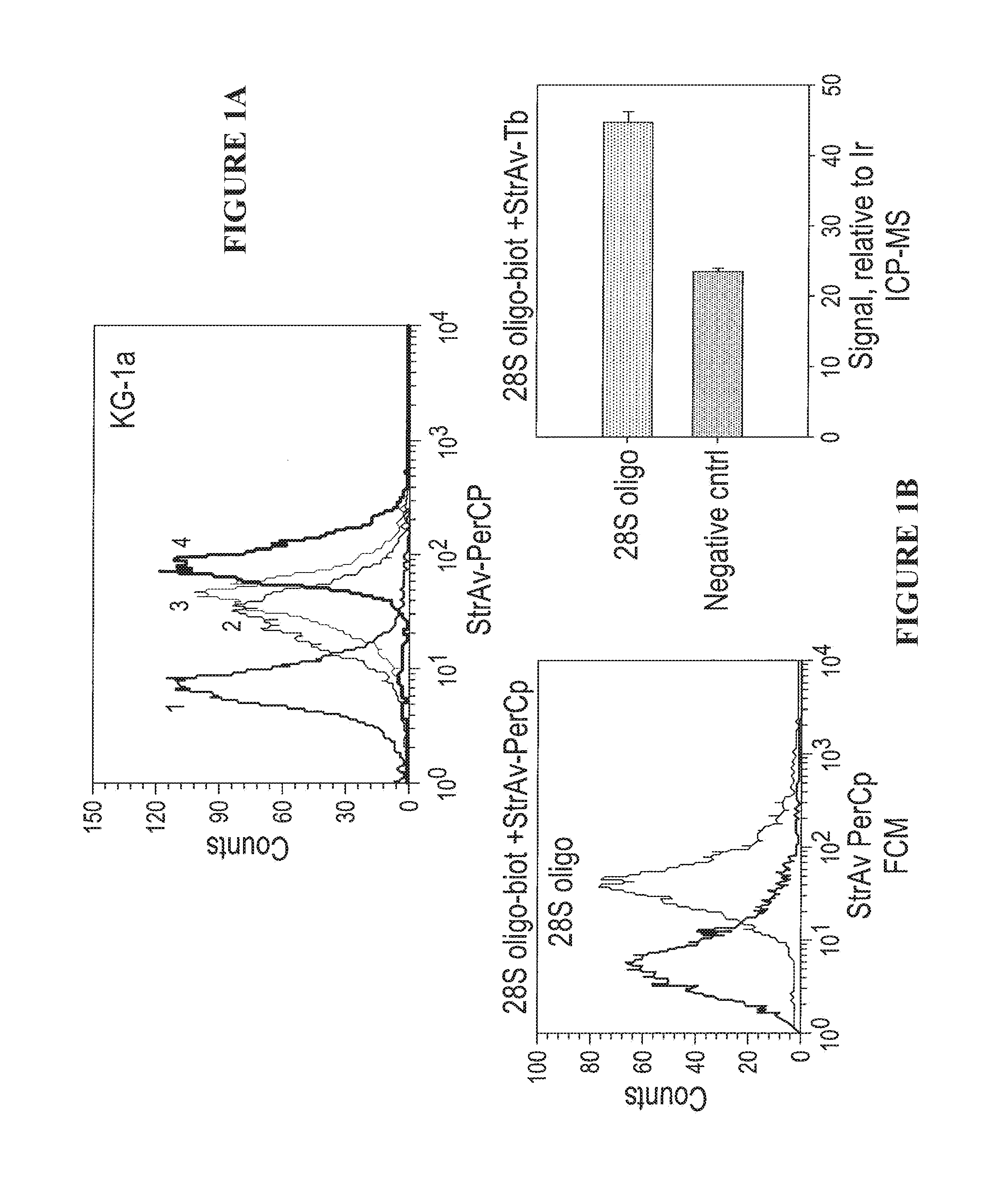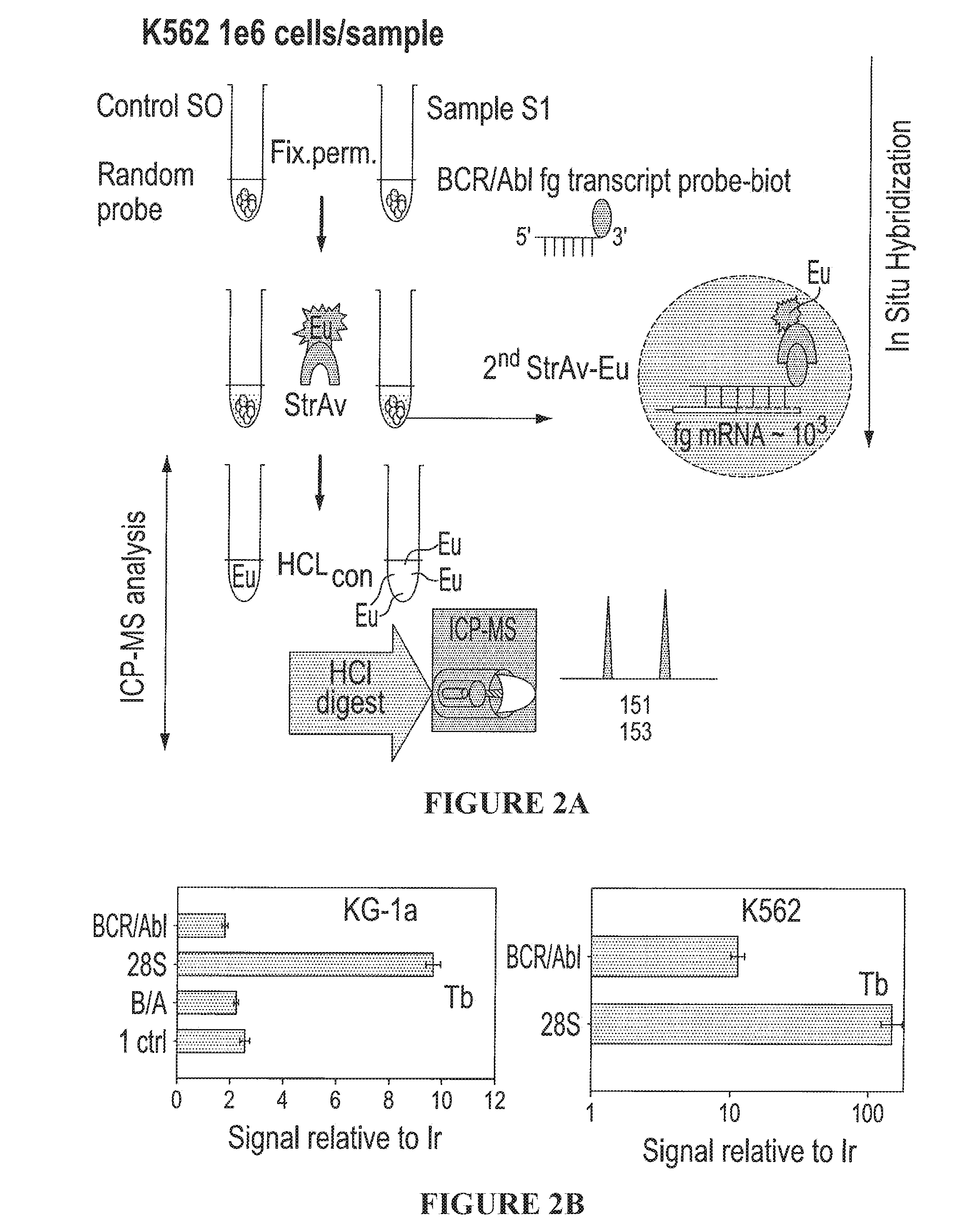Methods of Using Inductively Coupled Plasma Mass Spectroscopy Systems for Analyzing a Cellular Sample
a mass spectroscopy and plasma mass spectroscopy technology, applied in the direction of instruments, library screening, assay labels, etc., can solve the problems of not being able to combine quantification with massive multiplexing, overlapping probes, and not being able to easily multiplex
- Summary
- Abstract
- Description
- Claims
- Application Information
AI Technical Summary
Benefits of technology
Problems solved by technology
Method used
Image
Examples
experiment 1
[0077
[0078]In one embodiment, wherein the work flow chart is presented in FIG. 5, in situ hybridization for ICP-MS detection is performed by first treating the tissue or cell sample in such a way as to render target chromosomal and extrachomasomal nucleic acids available for hybridization to complementary probes (fixation / permeabilization); then exposing the sample to a probe or multiple probes labeled with different elemental tags and complementary to genes of interest; thirdly, washing sample to eliminate excess unbound and non-specifically interacting probe; finally subjecting the sample to particle or solution elemental analysis.
experiment 2
[0079
[0080]For element labeled bead gene analysis by ICP-MS (work flow chart shown in FIG. 6), total RNA is isolated from a biological sample and is hybridized with uniquely labeled beads conjugated to oligonucleotide probes; elemental tagged oligo(dT)20 probe; are added to the mixture; finally, the beads are subjected to single particle ICP-MS analysis.
[0081]Total RNA is isolated from a given sample using methods known in the art. For example, an acid guanidinium-phenol-chloroform extraction method can be used or a commercial reagent such as TRizol Reagent (GIBCOL Life Technologies) can be used for isolation of RNA from mammalian tissue. Additionally, messenger RNA may be isolated by oligo dT column chromatography or by using (dT)n magnetic beads (see, e.g., Sambrook et al.25, F. Ausubel et al.26). Conveniently, total RNA can be isolated from mammalian cells using RNeasy Total RNA isolation kit, for example (QIAGEN). A second cleanup after the ethanol precipitation step in the TRiz...
experiment 3
[0086
[0087]In yet another embodiment, the first series of examples were performed using conventional ICP-MS instrumentation as a detector and commercial metal (lanthanide) containing affinity reagents. It is to be understood that other metals can be used and that other instrumentation for elemental analysis can be used. Experiments employing biotinylated antisense oligonucleotide probes designed to hybridize in situ to specific, disease-relevant genes in human leukemia cells were used. The probes were identified by association with lanthanide labeled streptavidin (see FIG. 2A).
[0088]The feasibility of performing in situ hybridization with ICP-MS detection was tested on a model human leukemia cell line and results were compared to flow cytometry as shown in FIG. 1. Experiments were carried out to define the optimal fixation and permeabilization conditions and in situ hybridization parameters for suspension cells which were subsequently used for ICP-MS gene expression analysis. KG-1A ...
PUM
| Property | Measurement | Unit |
|---|---|---|
| temperature | aaaaa | aaaaa |
| pH | aaaaa | aaaaa |
| isotopic composition | aaaaa | aaaaa |
Abstract
Description
Claims
Application Information
 Login to View More
Login to View More - R&D
- Intellectual Property
- Life Sciences
- Materials
- Tech Scout
- Unparalleled Data Quality
- Higher Quality Content
- 60% Fewer Hallucinations
Browse by: Latest US Patents, China's latest patents, Technical Efficacy Thesaurus, Application Domain, Technology Topic, Popular Technical Reports.
© 2025 PatSnap. All rights reserved.Legal|Privacy policy|Modern Slavery Act Transparency Statement|Sitemap|About US| Contact US: help@patsnap.com



